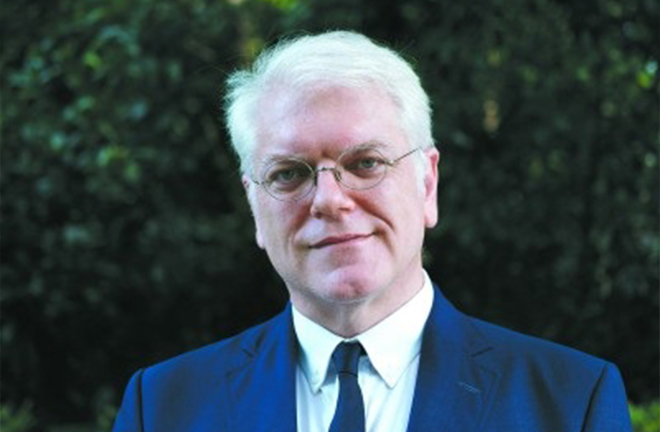China’s scientific development serves the greater good of humanity

Josef Gregory Mahoney Photo: Provided to CSST
In a recent interview with CSST, Josef Gregory Mahoney, a professor at the School of Politics and International Relations at East China Normal University, expounded his views on China’s sci-tech innovation system in a globalized world, the high-quality development of China’s higher education, and strengthening basic research.
Promoting Chinese modernization
Mahoney observed that China has made major and ever-increasing investments in research and development, while also incentivizing the publication of high-impact research papers. The country has placed a strong emphasis on encouraging innovation and intellectual property, in public research institutes and universities, as well as in private sector initiatives. Additionally, China has expanded its capacity to produce and train high-level talent, while welcoming back those who have trained and worked abroad. As is consistent with other aspects of Chinese modernization, China has fostered healthy, result-oriented competition in basic research as well as in the development of new techniques and products, including industry-specific interests like quantum computing and electric vehicles. Mahoney said that China has done so because it realizes the inexhaustible need to advance science and technology.
“The benefits are not just for China. They serve the greater good of humanity as well, with the best example here being China’s leading role in green innovation, but likewise, Chinese companies like Huawei providing affordable communications connectivity solutions to the Global South, creating opportunities for them to join the fourth and fifth industrial revolutions,” Mahoney pointed out. Along the way there have been some challenges, particularly as China has developed at speed. Consequently, China has demonstrated a willingness to make necessary adjustments, such as rebalancing research and development as needed. The country has also taken steps to ensure peer-reviewed research publications do not end up as mere mountains of paper, but rather present significant and meaningful findings.
The Chinese approach, according to Mahoney, involves identifying areas that permit or require progress, engineering appropriate solutions, evaluating results, consolidating achievements, then taking another step forward. This approach has proven to be highly effective for scientific and technological development, as well as for the modernization of China.
Mahoney indicated three notable changes in the practice of international academic exchange and cooperation.
First, a large number of international entrants are coming to China, including those seeking study and exchange opportunities. China responded to these developments in universities by creating stronger international programs and exchange mechanisms, including generous funding and scholarship opportunities. These programs were supported by local and national governments.
This helped establish institutional capacities far beyond what we saw before 2008. Second, the demonization of China’s academic image initiated and continued by some American political figures has rippled across US academic institutions, with several of them now restricting students from exchanges with China and discouraging faculty from the same. Consequently, mutual understanding has been gravely undermined. Third, however, Mahoney stressed the steady improvements of other relations, with more students coming to China from East Europe, South Asia, Southeast Asia, Central Asia, Latin America, the Middle East, and Africa.
China welcomes those who want to come to visit, and works with them to foster a deeper understanding of China’s achievements and capacities to promote growth and development. “Now we might see a return of Westerners as the negative depictions of China are increasingly deconstructed, and all the more so if China’s role as a global peacemaker advances,” he said.
Strengthening basic research
In Mahoney’s opinion, China understands very well that many of the biggest advances in science in the 20th century were driven by government leadership. It realizes the power of government organizations and financial support, and how to ensure these developments are matured in ways that serve the public good, as China realizes that revolutionary breakthroughs are often resisted by powerful private interests.
“What we consistently see with the Chinese system is the sort of bold steps, whether revolutionary or merely reform-oriented, that likewise seeks positive systemic synergies for advancement. And let’s be clear, this isn’t just about critical breakthroughs in basic science and technological development—it also speaks to the historically unprecedented rise of China as an advanced technological society from the ruins of the ‘Century of Humiliation,’” Mahoney explained.
Another point in Mahoney’s views is that basic research and big science are supported by Chinese students who were well-trained in mathematics and the sciences.
Mahoney suggested that China is a solution-oriented, relatively advanced technological society. While it cannot yet claim to have the most advanced technologies across the board, it is undoubtedly a leader in many areas, and may very well qualify as the most advanced technological society in the future.
Edited by ZHAO YUAN

 PRINT
PRINT CLOSE
CLOSE